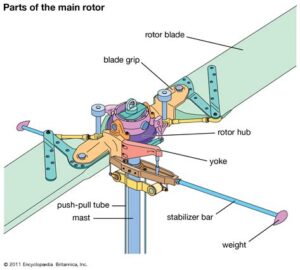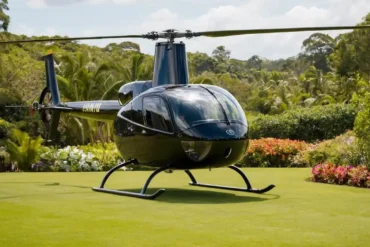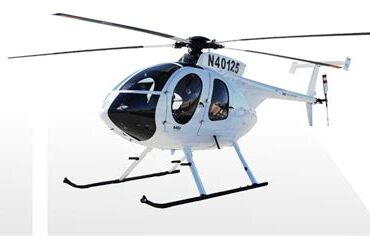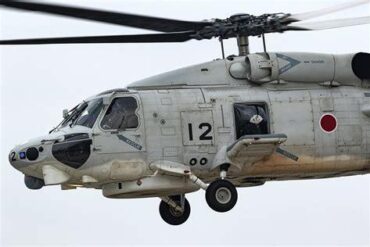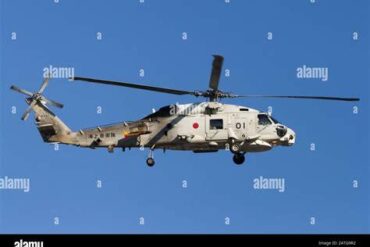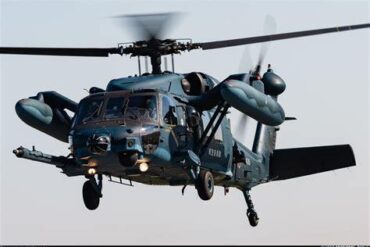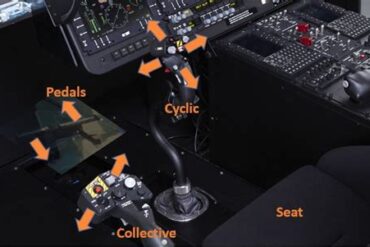Helicopter rotors are critical components of rotary-wing aircraft that enable them to achieve vertical flight. Unlike fixed-wing aircraft, helicopters rely on the rotation of their blades to generate lift, maneuverability, and control. This article delves into the intricate workings, types, and advancements in helicopter rotors, showcasing their significance in modern aviation.
1. The Anatomy of Helicopter Rotors
Helicopter rotors consist of several key parts, each playing an integral role in flight performance:
1.1 Rotor Blades
The rotor blades are the most visible components of a helicopter rotor system. Typically made from composite materials or aluminum, they are designed to withstand the aerodynamic forces experienced during flight. The shape and length of the blades are engineered to optimize lift and reduce drag. Each blade features a camber that influences airflow, creating the necessary lift as the blades rotate.
1.2 Hub
The hub is the central part of the rotor system, connecting the rotor blades to the rotor mast. It acts as a pivot point, allowing the blades to feather (change angle) and flapping (move up and down) in response to changing flight conditions. The hub’s design is crucial for maintaining structural integrity while allowing for the necessary movements of the blades.
1.3 Pitch Control Mechanism
The pitch control mechanism adjusts the angle of attack of the rotor blades. By changing the pitch, pilots can control lift and thrust. This mechanism is vital for maneuvering during different phases of flight, such as takeoff, landing, and hovering. Most helicopters utilize a collective control for simultaneous blade pitch adjustments and a cyclic control for differential pitch changes to tilt the helicopter.
2. Types of Helicopter Rotors
Helicopter rotors can be categorized into several types based on their design and operational characteristics. Understanding these types is essential for grasping how helicopters perform various maneuvers.
2.1 Single Rotor Systems
The single rotor system is the most common configuration, featuring one main rotor and a tail rotor for counteracting torque. This design is simple and efficient, allowing for agile maneuvers and a relatively lightweight structure. However, single rotor helicopters require a robust tail rotor to maintain stability and control.
2.2 Tandem Rotor Systems
In tandem rotor systems, two rotors are mounted on the same axis but rotate in opposite directions. This configuration eliminates the need for a tail rotor, providing excellent stability and lift capacity. Tandem rotor helicopters, such as the CH-47 Chinook, are known for their ability to transport heavy loads over long distances.
2.3 Coaxial Rotor Systems
Coaxial rotor systems consist of two rotors mounted one above the other on the same mast, rotating in opposite directions. This design further eliminates torque issues and enhances lift efficiency. Coaxial rotors are commonly found in military helicopters, providing superior maneuverability and compact design.
2.4 Intermeshing Rotor Systems
Intermeshing rotor systems feature two rotors that rotate in opposite directions while overlapping. This unique design allows for increased lift and reduced rotor diameter, making these helicopters highly maneuverable in confined spaces. The Kaman K-MAX is a notable example of an intermeshing rotor system, often used for heavy lifting in rugged terrains.
3. Rotor Dynamics and Performance
Understanding the dynamics of helicopter rotors is crucial for ensuring optimal performance and safety during flight. Several factors influence rotor dynamics, including blade design, rotational speed, and environmental conditions.
3.1 Lift and Drag Forces
The interaction of lift and drag forces is fundamental to rotor performance. As the rotor blades spin, they create low-pressure areas above and high-pressure areas below, generating lift. However, as speed increases, drag forces also rise, impacting overall efficiency. The balance between these forces determines the helicopter’s ability to perform various maneuvers.
3.2 Retreating and Advancing Blades
In forward flight, the rotor blades experience different airspeeds. The advancing blade moves into the oncoming airflow, generating more lift, while the retreating blade moves away from the airflow, experiencing decreased lift. This phenomenon can lead to an imbalance, known as dissymmetry of lift, which requires careful management by the pilot to maintain stability and control.
3.3 Blade Flapping and Lead-Lag Motion
As helicopters fly, rotor blades experience flapping and lead-lag motions. Flapping occurs when blades move up and down in response to changing aerodynamic forces, while lead-lag motion refers to the fore-and-aft movement of the blades. These motions are critical for maintaining rotor balance and performance during various flight conditions.
4. Advances in Rotor Technology
Recent advancements in rotor technology have significantly enhanced the performance and safety of helicopter operations. Innovations in materials, designs, and systems are driving the future of rotary-wing flight.
4.1 Composite Materials
The use of composite materials has revolutionized rotor blade construction. Composites are lighter, stronger, and more resistant to environmental factors than traditional materials. This weight reduction leads to improved fuel efficiency, increased payload capacity, and enhanced overall performance.
4.2 Active Rotor Control Systems
Active rotor control systems employ advanced sensors and computer algorithms to monitor and adjust rotor performance in real-time. These systems enhance stability, reduce pilot workload, and improve safety by automatically compensating for changing flight conditions. Such technology is becoming increasingly prevalent in modern helicopters, making them more responsive and easier to operate.
4.3 Quiet Rotor Technologies
Noise reduction is a critical consideration in helicopter design, particularly for urban operations. Quiet rotor technologies, including specialized blade shapes and noise-absorbing materials, aim to minimize rotor noise during flight. These innovations help improve community acceptance of helicopter operations, particularly in populated areas.
5. Safety Considerations and Maintenance
The safety of helicopter operations is heavily reliant on the integrity and performance of the rotor system. Regular maintenance and inspections are essential to ensure the longevity and reliability of helicopter rotors.
5.1 Routine Inspections
Routine inspections of rotor systems are critical for identifying wear, damage, or structural issues. Maintenance teams thoroughly inspect rotor blades, hubs, and control mechanisms to ensure they operate within safe parameters. Early detection of potential issues can prevent catastrophic failures during flight.
5.2 Monitoring Systems
Modern helicopters are equipped with advanced monitoring systems that provide real-time data on rotor performance. These systems can alert pilots to anomalies such as unusual vibrations or changes in pitch, enabling proactive maintenance and enhancing overall safety.
6. The Future of Helicopter Rotors
As the aviation industry continues to evolve, so too do the technologies and designs of helicopter rotors. The future promises exciting developments that will further enhance helicopter performance, safety, and environmental sustainability.
6.1 Electric and Hybrid Rotors
The rise of electric and hybrid rotor systems is paving the way for more environmentally friendly helicopter operations. Electric rotors offer the potential for reduced emissions and noise, while hybrid systems can improve fuel efficiency. These advancements are particularly relevant in urban air mobility applications, where noise and pollution are significant concerns.
6.2 Autonomous Rotorcraft
The development of autonomous rotorcraft is another frontier in helicopter technology. As automation and AI continue to advance, the potential for fully autonomous helicopters could revolutionize various sectors, including cargo transport and emergency services. Autonomous systems will rely on sophisticated rotor technologies to navigate complex environments safely.
Conclusion
In summary, helicopter rotors are more than just components; they are the lifeblood of rotary-wing aviation. Understanding their design, dynamics, and advancements is essential for appreciating the complexity of helicopter flight. As technology continues to progress, helicopter rotors will undoubtedly play a pivotal role in shaping the future of aviation, enabling safer, quieter, and more efficient flight operations. Through continuous innovation, the capabilities of helicopters will expand, opening new possibilities for transport, rescue, and exploration.
